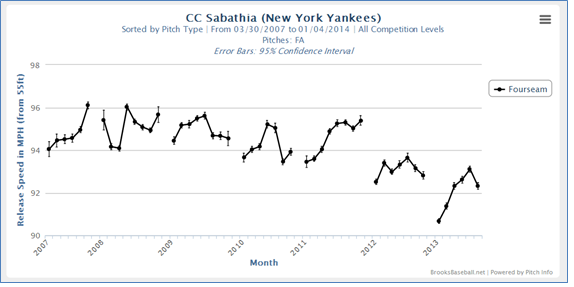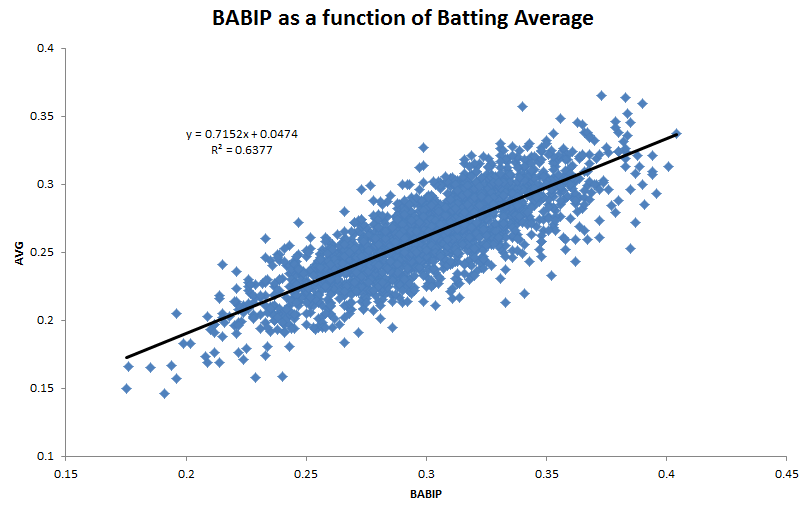It’s been awhile since I’ve written something on here and I promise it was not because of slack. I’ve been working on this year’s fantasy guide and this one is going to be a lot better than last years. The write ups are longer and honestly have more substantial insight. This is the player capsule I wrote for CC Sabathia. I also wrote another capsule for Hyun-Jin Ryu over at Baseball Professor.
Much has been said about Sabathia’s decreased velocity being the primary cause for his down season, but most people forget to mention his fastball velocity actually increased as the season progressed except for August (a hamstring pull is most likely the cause for the drop off). Please see the image below of Sabathia’s fastball velocity since 2007 (courtesy of BrooksBaseball.net).

When looking at the chart the decline in fastball velocity is quite apparent, but according to the data in the table below the effectiveness of the fastball didn’t change very much in 2013 (data from BrooksBaseball.net). Also, from the research I’ve done, a drop in fastball velocity does not correlate to poor performance. Therefore, something else must have caused the poor performance.
| Year | AVG | SLG | ISO | BABIP | K% | BB% |
| 2008 | .305 | .458 | .154 | .320 | 1.47% | 7.22% |
| 2009 | .249 | .408 | .158 | .274 | 12.31% | 8.85% |
| 2010 | .267 | .373 | .107 | .301 | 14.12% | 1.12% |
| 2011 | .292 | .448 | .156 | .324 | 14.09% | 9.76% |
| 2012 | .308 | .492 | .184 | .335 | 11.88% | 6.6% |
| 2013 | .288 | .481 | .193 | .303 | 13.14% | 1.00% |
There must be another reason why 2013 was such a poor season. According to one talent evaluator the weight loss was detrimental. “The weight loss has created a balance problem for him. He’s all over the place. He’s learning how to pitch in that body, a body he’s really never had. I don’t think there’s anything wrong with him other than that. Sometimes you pitch at a certain weight all your life and then someone has the brilliant idea that you should lose weight because it’s putting stress on your knees, you do it, and then you’re dealing with something else.”
Sabathia was bad last year, but I believe he can still rebound and turn it around because he never relied on the fastball to get guys out. Also, you don’t need to throw in the mid-90s to get batters, just ask Hyun-Jin Ryu. I don’t believe he’ll return to 2011 levels, but he could still be a usable starter in 12-team mixed leagues if can repeat his delivery with his new, slimmer body.
If you are looking for his statistical projections please go here and download my latest projections.





